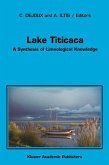The first Jellyfish Blooms volume was published in 2001. Since that time, reports of human problems with jellyfish, as well as public and scientific awareness of the importance of jellyfish in coastal waters have increased dramatically. At the same time, the severity of the many complex environmental problems in the global ocean and awareness of those problems also has increased dramatically. The accelerating degradation of the oceans from over-harvesting of commercial species, eutrophication, decreased oxygen, climate change, and species introductions may be promoting the expanding problems with jellyfish.
Jellyfish Blooms: New Problems and Solutions is the third volume in this series. Syntheses and original research articles provide an identification key for the ephyrae of 18 common scyphozoan species, document the Mediterranean-wide bloom of the invasive ctenophore Mnemiopsis leidyi, and address the direct effects of ocean acidification on jellyfish for the first time. The influence of climate change on jellyfish blooms is covered in several papers. New methods are presented for large-scale estimation of scyphomedusan occurrence with the Continuous Plankton Recorder and trophic effects as estimated by respiration. Moreover, novel approaches are described for study of medusan toxicity. This is a key reference for students and professional marine biologists, oceanographers, and fishery scientists and managers
Jellyfish Blooms: New Problems and Solutions is the third volume in this series. Syntheses and original research articles provide an identification key for the ephyrae of 18 common scyphozoan species, document the Mediterranean-wide bloom of the invasive ctenophore Mnemiopsis leidyi, and address the direct effects of ocean acidification on jellyfish for the first time. The influence of climate change on jellyfish blooms is covered in several papers. New methods are presented for large-scale estimation of scyphomedusan occurrence with the Continuous Plankton Recorder and trophic effects as estimated by respiration. Moreover, novel approaches are described for study of medusan toxicity. This is a key reference for students and professional marine biologists, oceanographers, and fishery scientists and managers








